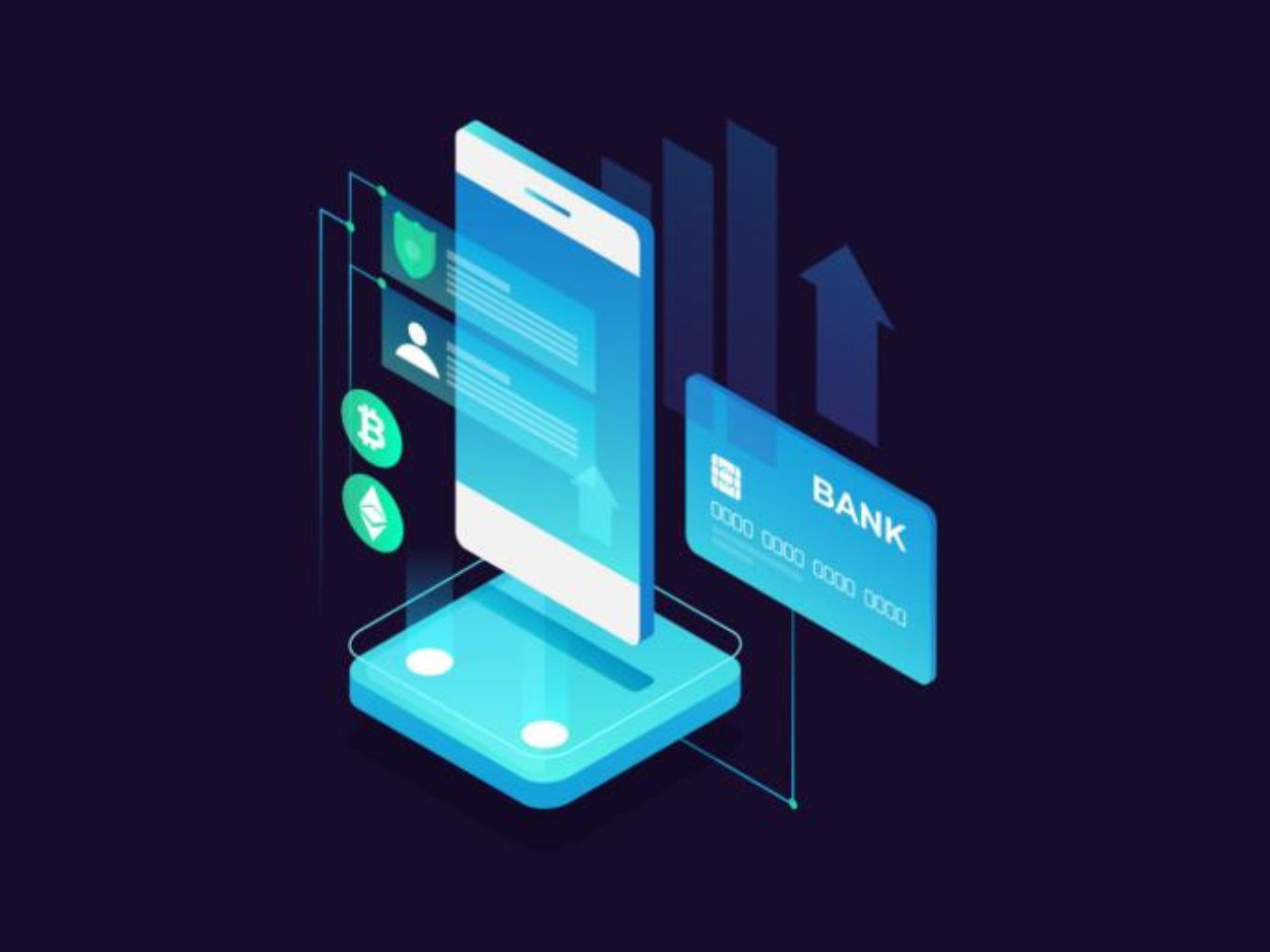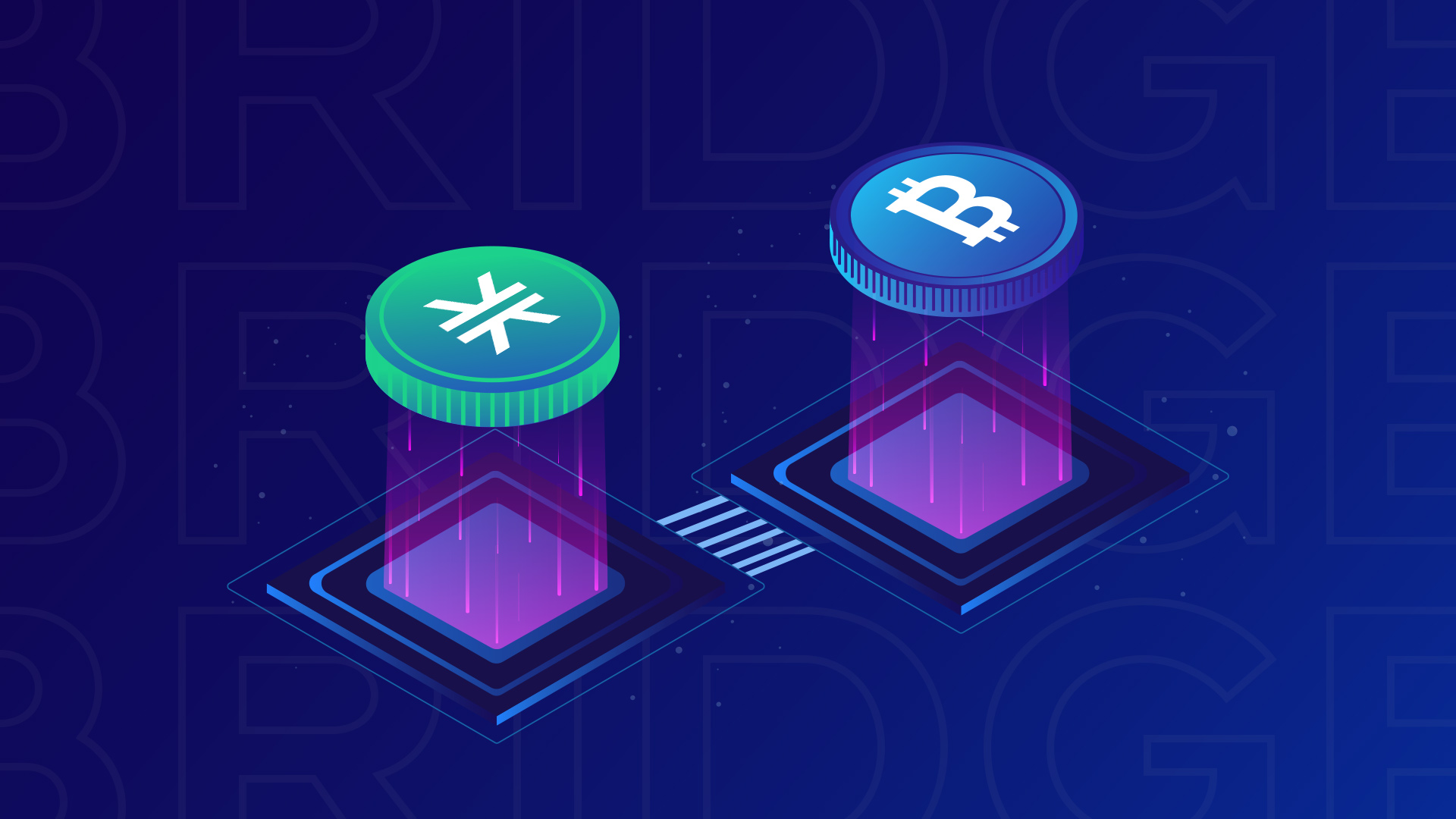Introduction
When it comes to data security and efficient data processing, several techniques and methodologies have emerged to protect sensitive information and optimize computational processes. Among these techniques, tokenization, wrapping, and folding have gained prominence in recent years. These methods play a crucial role in various industries, including finance, healthcare, and e-commerce, by ensuring the confidentiality, integrity, and availability of data.
In this article, we will explore the concepts of tokenization, wrapping, and folding, and delve into their processes, advantages, and challenges. By understanding these techniques, businesses and individuals can make informed decisions to safeguard their data and streamline their operations.
First, we will explore the concept of tokenization, which involves replacing sensitive data with unique identifiers called tokens. This technique has become increasingly popular due to its effectiveness in reducing the risk of data breaches. Next, we will delve into wrapping, a method used to encapsulate data within a protective layer to prevent unauthorized access. Finally, we will examine folding, a process that involves partitioning large datasets into smaller, manageable subsets.
By examining the nuances and benefits of these techniques, we can develop a comprehensive understanding of how they contribute to the security and efficiency of data management. So, let’s begin our exploration of tokenization, wrapping, and folding.
Definition of Tokenization
Tokenization is a process used to secure sensitive data by replacing it with randomly generated alphanumeric characters known as tokens. This technique ensures that the original data remains hidden and protected, reducing the risk of unauthorized access and data breaches.
At its core, tokenization involves the substitution of personally identifiable information (PII) such as credit card numbers, social security numbers, or bank account details with unique tokens. These tokens serve as placeholders for the sensitive data and are stored in a secure database or token vault.
The tokens generated during the tokenization process hold no inherent meaning or relationship to the original data, making them meaningless to anyone who might gain access to them without proper authorization. This ensures that even if the tokenized data is intercepted or compromised, it remains virtually impossible to reverse-engineer the original information from the tokens alone.
Tokenization provides a high level of security compared to other methods such as encryption or masking. Unlike encryption, tokenization does not rely on a key-based system and instead replaces the sensitive data entirely. Additionally, while masking partially obscures data, tokenization completely removes it from the system that processes or stores the information.
This technique offers a balance between data security and usability. By replacing sensitive data with tokens, businesses can still perform various operations and transactions that require unique identifiers, such as authorization or validation, without exposing the underlying sensitive information.
It is important to note that tokenization should not be confused with encryption. While both techniques aim to protect data, they differ in their approach and purpose. Encryption focuses on making data unreadable by transforming it into an encoded format, which can be decoded using a specific key. Tokenization, on the other hand, replaces the data altogether with tokens, making it meaningless without access to the tokenization system.
In the next section, we will explore the process of tokenization in detail, shedding light on the steps involved in converting sensitive data into tokens.
Process of Tokenization
The process of tokenization involves several key steps to effectively convert sensitive data into secure tokens. Let’s explore these steps in detail:
- Data Identification: The first step in tokenization is identifying the data elements that need to be protected. This typically includes personally identifiable information (PII), such as credit card numbers, social security numbers, or bank account details.
- Token Generation: Once the sensitive data is identified, the next step is to generate random tokens to replace the original data. These tokens are constructed using a combination of alphanumeric characters, ensuring their uniqueness and lack of correlation with the original information.
- Token Mapping: Token mapping involves creating a secure database or token vault that associates each generated token with its corresponding original data. This mapping ensures that the system can retrieve the original data when required based on the token values stored in the database.
- Data Submission: In this step, the original data is securely submitted to the tokenization system. The system then replaces the sensitive information with the corresponding tokens. The original data is discarded or stored separately, ensuring its separation from the tokenized information.
- Token Storage: The tokens generated during the tokenization process are stored in a token vault or secure database. Access to this vault is strictly controlled to prevent unauthorized access to sensitive information.
- Data Retrieval: When the need arises to retrieve the original data, the token is used to query the token vault or secure database. The system matches the token to its corresponding original data and retrieves the necessary information.
By following these steps, businesses can seamlessly integrate tokenization into their data management processes and protect sensitive information from potential security breaches.
It is worth mentioning that tokenization can occur at various points in the data flow, depending on the specific use case. For example, tokenization can take place at the point of data entry, such as when a customer provides their credit card information during an online transaction. Alternatively, tokenization can be performed at the backend, where sensitive data may be temporarily stored or passed between systems.
Now that we have examined the process of tokenization, let’s explore the advantages it offers to businesses and individuals in the next section.
Advantages of Tokenization
Tokenization offers a range of advantages for businesses and individuals who are looking to safeguard their sensitive data. Let’s explore some of the key benefits:
- Data Security: Tokenization provides a high level of data security by completely removing sensitive information from the system and replacing it with tokens. In the event of a data breach, the tokens are meaningless and cannot be reverse-engineered to obtain the original data. This significantly reduces the risk of exposing sensitive information and helps businesses comply with data protection regulations.
- Reduced PCI DSS Scope: For businesses that handle credit card transactions, tokenization can greatly simplify their compliance with the Payment Card Industry Data Security Standard (PCI DSS). By replacing sensitive credit card data with tokens, businesses can minimize the systems that come in contact with cardholder data, thereby reducing the scope of compliance assessments.
- Streamlined Data Handling: Tokenization enables businesses to handle sensitive data more efficiently. Since the original data is replaced with tokens, the need to store, transmit, and process sensitive information is significantly reduced. This streamlines data handling processes and reduces the complexity of data management.
- Improved Customer Trust: By implementing tokenization, businesses can demonstrate their commitment to data security and protect their customers’ sensitive information. This helps establish trust with customers, who are increasingly concerned about the privacy and security of their data. Tokenization reassures customers that their information is being handled with the utmost care and reduces the risk of data breaches.
- Ease of Integration: Tokenization can be seamlessly integrated into existing systems and processes without requiring extensive modifications or disruptions. It does not impact the functionality or usability of applications, allowing organizations to maintain their workflows and customer experiences while enhancing data security.
- Flexibility in Token Usage: Tokens generated during the tokenization process can be used for various purposes beyond data security. For example, tokens can be used as references for transaction history, loyalty programs, or other business processes. This flexibility allows organizations to leverage tokenized data for additional functionalities without compromising the security of sensitive information.
By leveraging these advantages, businesses can protect their sensitive data, comply with industry regulations, and gain the trust of their customers. However, it is important to be aware of the challenges and considerations associated with tokenization, which we will explore in the next section.
Challenges in Tokenization
While tokenization offers numerous benefits, there are certain challenges that organizations may face when implementing and maintaining tokenization systems. Let’s explore some of these challenges:
- Token Vault Security: The token vault, where the mapping between tokens and original data is stored, must be securely maintained. Access controls, data encryption, and monitoring mechanisms should be in place to prevent unauthorized access and potential misuse of the tokenized data.
- Integration Complexity: Integrating tokenization into existing systems and workflows can be complex, especially in large organizations with multiple applications and databases. Ensuring proper compatibility and smooth integration across various systems can require significant time and resources.
- Token Format Consistency: Consistency in token formats is crucial to ensure seamless data retrieval and processing. Organizations must establish standards for token formats and ensure that all systems and applications adhere to these standards, even when tokenizing data from different sources or across multiple platforms.
- Token Expiry and Rotation: Effective tokenization systems should have mechanisms in place to manage token expiry and rotation. Regularly rotating tokens and expiring older ones helps enhance security, but it also requires careful planning and coordination to prevent disruptions in data retrieval and processing.
- Data Recovery: In scenarios where data needs to be recovered or migrated, organizations must have robust mechanisms in place to map tokens back to their original data. Proper data recovery processes must be established to ensure swift and accurate retrieval of information when necessary.
- System Performance: Tokenization processes can introduce additional system overhead and potentially impact performance, especially in high-volume transaction environments. Organizations should carefully assess system requirements and plan for adequate resources and infrastructure to handle the increased computational and storage demands.
By addressing these challenges and implementing appropriate measures, organizations can overcome potential obstacles and successfully leverage the benefits of tokenization to secure their sensitive data.
Definition of Wrapping
Wrapping is a technique used to encapsulate data within a protective layer for enhanced security and privacy. Through wrapping, sensitive information is encrypted or encoded and securely packaged to prevent unauthorized access or tampering.
In the context of data security, wrapping involves encrypting or encoding the data using cryptographic algorithms or encoding schemes. The encrypted or encoded data is then encapsulated within a wrapper that provides an additional layer of protection.
Unlike encryption, which focuses primarily on making the data unreadable by transforming it into a coded format, wrapping involves encrypting or encoding the data and enveloping it within a wrapper. This wrapper acts as a protective barrier, shielding the data from external threats and safeguarding its integrity.
The wrapping process typically involves the following steps:
- Data Encryption or Encoding: The sensitive data is transformed into an encrypted or encoded form using cryptographic algorithms or encoding schemes. This step ensures that the data is secure and cannot be easily understood or manipulated without proper authorization.
- Wrapper Generation: A wrapper, also known as an envelope, is created to contain the encrypted or encoded data. The wrapper can include additional metadata or security information to facilitate proper handling and authentication of the wrapped data.
- Authentication and Integrity Verification: To ensure the integrity and authenticity of the wrapped data, mechanisms like digital signatures or checksums can be employed. These mechanisms allow the recipient to verify the integrity of the wrapped data and ensure that it has not been tampered with.
- Storage or Transmission: The wrapped data can be securely stored or transmitted, depending on the use case. The wrapper acts as a protective shield, providing an additional layer of security during storage or transmission.
- Unwrapping and Decryption: When the recipient needs to access the wrapped data, the wrapper is decrypted or decoded, and the encrypted or encoded data is recovered back to its original form. This process requires proper authorization and authentication to protect the data’s confidentiality.
Wrapping techniques are commonly used in various industries, including healthcare, finance, and information technology, to protect sensitive information during storage, transmission, or when interacting with external systems.
Next, we will explore the advantages and challenges associated with wrapping sensitive data.
Process of Wrapping
The process of wrapping involves several key steps to ensure the secure encapsulation of sensitive data within a protective layer. Let’s explore these steps in detail:
- Data Encryption or Encoding: The first step in the wrapping process is to transform the sensitive data into an encrypted or encoded form. Encryption involves using cryptographic algorithms to scramble the data, making it unreadable without the proper decryption key. Encoding, on the other hand, involves converting the data into a different format using encoding schemes such as Base64 or hexadecimal.
- Wrapper Generation: Once the data is encrypted or encoded, a wrapper is generated to encapsulate the protected data. The wrapper typically includes additional metadata and security information, such as digital signatures, to ensure the integrity and authenticity of the wrapped data.
- Authentication and Integrity Verification: To ensure the integrity and authenticity of the wrapped data, mechanisms like digital signatures or checksums can be used. These mechanisms allow the recipient to verify that the wrapped data has not been tampered with during storage or transmission.
- Storage or Transmission: The wrapped data can be securely stored or transmitted, depending on the specific use case. The wrapper provides an additional layer of security, protecting the encapsulated data from unauthorized access or tampering.
- Unwrapping and Decryption: When the recipient needs to access the wrapped data, the wrapper is decrypted or decoded, and the original sensitive data is recovered. This process requires proper authorization and authentication to ensure the confidentiality of the data.
The wrapping process adds an extra layer of security to sensitive data, allowing organizations to protect their information during storage, transmission, or when interacting with external systems. It ensures that only authorized individuals or systems are able to access and decipher the sensitive data contained within the wrapper.
It is worth noting that the specific encryption, encoding, and authentication mechanisms used in the wrapping process can vary depending on the security requirements and industry standards. Organizations need to carefully select and implement appropriate techniques to ensure the confidentiality, integrity, and availability of their wrapped data.
Now that we have explored the process of wrapping, let’s delve into the advantages that this technique offers for data security and privacy.
Advantages of Wrapping
Wrapping sensitive data offers several advantages in terms of data security and privacy. Let’s explore some of the key benefits:
- Data Protection: Wrapping adds an additional layer of protection to sensitive data by encrypting or encoding it and encapsulating it within a wrapper. This helps prevent unauthorized access, ensuring the confidentiality of the data and reducing the risk of data breaches.
- Data Integrity: Wrapping techniques often incorporate mechanisms to verify the integrity of the wrapped data. This ensures that the data remains unchanged during storage, transmission, or interaction with external systems. If any tampering is detected, the integrity verification mechanisms can alert the recipient, allowing them to take appropriate action.
- Access Control: Wrapping enables organizations to implement access controls and permissions at the wrapper level. This allows for fine-grained control over who can access and manipulate the sensitive data contained within the wrapper, further enhancing data security and privacy.
- Interoperability: Wrapped data can be easily shared or transmitted between different systems or organizations. The use of standardized wrapper formats and encryption or encoding algorithms ensures interoperability, making it easier to exchange sensitive data securely with trusted parties.
- Compliance: Many industries and jurisdictions have specific data protection regulations and compliance requirements. Implementing wrapping techniques can help organizations meet these requirements by ensuring that sensitive data is adequately protected and additional security measures, such as encryption, are in place.
- Data Versatility: Wrapping allows organizations to include additional metadata and security information within the wrapper. This flexibility enables the inclusion of details such as data source, timestamps, or digital signatures, which can enhance the usefulness and verifiability of the wrapped data.
By leveraging these advantages, organizations can maintain the confidentiality, integrity, and availability of their sensitive data while adhering to compliance standards and best practices.
However, it is important to be aware of the potential challenges and considerations associated with wrapping sensitive data, which we will explore in the next section.
Challenges in Wrapping
While wrapping sensitive data offers numerous benefits, organizations may face several challenges when implementing and maintaining wrapping techniques. Let’s explore some of the key challenges:
- Key Management: Effective key management is crucial when implementing wrapping techniques. Organizations need to securely manage encryption keys and ensure their confidentiality and availability. This includes key generation, distribution, storage, and rotation, which can be complex and resource-intensive tasks.
- Wrapper Compatibility: Wrapping techniques may require the use of specific wrapper formats or encryption algorithms, which may not be universally compatible across different systems or platforms. Organizations need to ensure that the wrapped data can be properly handled and decrypted by all intended recipients.
- Performance Impact: Encrypting and wrapping sensitive data can have an impact on system performance, particularly in high-volume environments. The additional processing overhead required for encryption, decryption, and wrapper handling can potentially slow down data operations and increase resource utilization.
- Keys and Wrapper Access Control: Proper access controls must be implemented to restrict access to encryption keys and the wrapped data. Unauthorized access to keys or the ability to modify wrapper parameters can compromise the security and privacy of the sensitive data. Organizations need to carefully manage and control access rights to minimize the risk of unauthorized data exposure.
- Compatibility with Legacy Systems: Integrating wrapping techniques into legacy systems or working with third-party systems that do not support the required encryption or wrapper formats can be challenging. Legacy systems may require additional modifications or upgrades to support the necessary cryptographic functions or wrapper handling.
- System Complexity: Implementing wrapping techniques can introduce additional complexity to data handling and processing workflows. Organizations need to carefully plan and design their systems to accommodate the encryption and wrapper operations, ensuring that they do not disrupt existing processes or introduce unnecessary complexity.
By addressing these challenges, organizations can successfully overcome potential obstacles and leverage the benefits of wrapping sensitive data while maintaining the confidentiality, integrity, and availability of their information assets.
Definition of Folding
In the context of data processing and management, folding refers to the process of partitioning or breaking down large datasets into smaller, more manageable subsets. This technique allows for easier analysis, storage, and manipulation of data.
By dividing a large dataset into smaller folds, organizations can overcome challenges related to processing capacity, storage limitations, and computational efficiency. Folding helps optimize data processing tasks, such as statistical analysis, machine learning algorithms, or database operations, by dividing the workload into more manageable portions.
The folding process typically involves the following steps:
- Dataset Identification: The first step in folding is to identify the dataset that needs to be partitioned. This can be a large file, a database table, or any other form of structured or unstructured data.
- Partitioning Strategy: Organizations determine the partitioning strategy based on the specific requirements and objectives of data processing tasks. Common partitioning strategies include randomly dividing the dataset, splitting based on specific attributes or criteria, or using pre-defined splitting techniques.
- Partition Creation: Once the partitioning strategy is determined, the dataset is divided into smaller subsets or folds. Each fold typically contains a portion of the original data, ensuring that the entire dataset is represented across the folds.
- Data Storage: The folds are stored either as separate files or within a database, depending on the requirements and preferences of the organization. This allows for easy access and retrieval of specific subsets of data.
- Data Processing: The smaller subsets are then processed independently, either sequentially or in parallel, depending on the computing resources and requirements of the analysis or task at hand.
- Aggregation: After individual processing is complete, the results from each fold are aggregated or combined to obtain the final output or analysis.
By leveraging folding techniques, organizations can handle large datasets more efficiently and effectively. The smaller subsets facilitate faster processing, reduce memory requirements, and enable better scalability in data-intensive tasks.
In the next section, we will explore the advantages that folding offers in data processing and analysis.
Process of Folding
The process of folding involves several crucial steps in order to partition large datasets into smaller, more manageable subsets. Let’s explore these steps in detail:
- Dataset Identification: The first step in the folding process is identifying the dataset that needs to be partitioned. This could be a large dataset stored in a file, a database table, or any other structured or unstructured data.
- Partitioning Strategy: Organizations determine the partitioning strategy based on their specific objectives and requirements. This could involve splitting the dataset randomly, dividing it into subsets based on specific attributes or criteria, or using predefined folding techniques.
- Partition Creation: Once the partitioning strategy is defined, the dataset is divided into smaller subsets or folds. Each fold typically contains a portion of the original data, ensuring that the complete dataset is represented across the folds.
- Data Storage: The individual folds are stored separately, either as individual files or within a database. This allows for easy access and retrieval of specific subsets of data during analysis or processing.
- Data Processing: With the dataset partitioned into folds, organizations can process each subset independently. This can be done sequentially or in parallel, depending on the available computing resources and the nature of the data analysis or task at hand.
- Aggregation: Once the individual processing of each fold is completed, the results or outputs from each subset are aggregated or combined to obtain the final analysis or desired outcome. This may involve merging the processed data, finding statistical summaries, or performing further analysis on the aggregated results.
By following these steps, organizations can effectively handle and process large datasets in a more efficient and manageable manner. Folding allows for improved scalability, faster processing times, and reduced memory requirements by breaking down a complex task into smaller, more manageable subsets.
It’s worth noting that the specific partitioning strategy and folding technique used can vary based on the nature of the data and the specific requirements of the analysis or task at hand. Organizations need to carefully plan and define their folding approach to maximize the benefits and efficiency of the process.
Now that we have explored the process of folding, let’s delve into the advantages it offers in data processing and analysis.
Advantages of Folding
Folding, or partitioning large datasets into smaller subsets, offers several advantages in data processing and analysis. Let’s explore some of the key benefits:
- Scalability: By dividing a large dataset into smaller folds, organizations can achieve better scalability in data processing. Each fold can be processed independently, allowing for parallelization and distributed computing, which improves overall performance and reduces processing time.
- Efficient Resource Utilization: Folding helps optimize resource utilization by reducing memory requirements. Processing smaller subsets of data at a time ensures that memory limits are not exceeded, allowing computations to be performed more efficiently, even with limited resources.
- Improved Processing Speeds: The partitioning of data into folds enables faster processing times. By distributing the workload across multiple folds, organizations can achieve faster results compared to processing the entire dataset in one go.
- Data Subset Analysis: Folding provides the advantage of analyzing data subsets independently. This allows organizations to focus on specific portions of the dataset, which can be beneficial for targeted analysis, data exploration, or deriving insights from different segments of the data.
- Reduced Computational Complexity: Dividing data into smaller folds can significantly reduce the computational complexity of data processing tasks. This simplification makes it easier to develop algorithms, perform calculations, and implement statistical models, resulting in more efficient and manageable analysis processes.
- Enhanced Data Privacy: By working with smaller subsets, organizations can limit exposure to sensitive or confidential data. This is particularly useful when working with personally identifiable information (PII) or other privacy-sensitive data, as it helps reduce risks and ensure compliance with data protection regulations.
- Data Quality and Error Detection: Folding allows for easier detection and analysis of specific data quality issues or errors. By analyzing smaller subsets individually, organizations can identify discrepancies, missing values, or anomalies more effectively, improving overall data quality.
By leveraging these advantages, organizations can streamline their data processing and analysis workflows. Folding allows for more efficient resource utilization, faster processing speeds, and targeted analysis, leading to more accurate insights and better-informed decision-making.
However, it is important to consider the potential challenges and limitations associated with folding, such as ensuring proper data partitioning, managing fold interactions, and maintaining data consistency, which may vary depending on the specific use case and dataset characteristics.
Challenges in Folding
While folding offers several advantages in data processing and analysis, there are also challenges that organizations may encounter when implementing and working with folded datasets. Let’s explore some of the key challenges:
- Data Partitioning: Determining the optimal partitioning strategy can be challenging, as it depends on the specific dataset and analysis requirements. Selecting the wrong partitioning approach may result in imbalanced subsets, leading to biased or inaccurate results.
- Data Consistency: Ensuring data consistency across the folds is essential to avoid discrepancies and errors in the analysis. Organizations need to carefully manage and maintain the consistency of data attributes and relationships when partitioning datasets.
- Interactions between Folds: In some cases, analysis or processing tasks may require interactions between the individual folds. Managing the communication and coordination between the subsets can introduce additional complexity and overhead.
- Complex Query Handling: Handling complex queries that span multiple folds can be challenging. Organizations need to design appropriate strategies to handle queries that require accessing and processing data distributed across different subsets.
- Impacts on Data Sampling: If the folding process involves random partitioning, data sampling techniques may be impacted. Care must be taken to ensure that the sampling remains representative and unbiased, even in the presence of folded datasets.
- Loss of Global View: Working with folded datasets means operating on individual subsets, potentially losing the holistic view of the entire dataset. Organizations need to carefully consider the implications of analyzing and making decisions based on partial views of the data.
- Data Transfer and Storage: Partitioning large datasets into folds may require additional storage space, especially if each subset needs to be maintained separately. Efficient data transfer and storage mechanisms should be in place to handle the increased volume of data.
- Algorithm Adaptation: Some algorithms may not be inherently suited for working with folded datasets, requiring modifications or adaptations to accommodate the partitioned nature of the data. Organizations need to evaluate and adapt their algorithms accordingly.
By understanding and addressing these challenges, organizations can effectively leverage the benefits of folding while mitigating potential limitations. Proper planning, data management strategies, and adaptation of processing techniques can help overcome these challenges and ensure the successful utilization of folded datasets in data processing and analysis.
Conclusion
Tokenization, wrapping, and folding are powerful techniques in the realm of data security and processing. Each method serves a unique purpose and offers specific advantages for organizations looking to protect sensitive data and optimize data management processes.
Tokenization provides a secure way to protect sensitive information by replacing it with tokens, reducing the risk of data breaches and ensuring compliance with data protection regulations. Wrapping enhances data security by encapsulating sensitive data within a protective layer, while also enabling access control and integrity verification. Folding, on the other hand, allows for more efficient data processing and analysis by partitioning large datasets into smaller, manageable subsets.
These techniques bring notable benefits, including enhanced data security, improved processing speeds, scalability, and efficient resource utilization. They can help organizations comply with regulations, protect sensitive information, and streamline data analysis processes for better decision-making.
However, the implementation of these techniques also presents challenges. Organizations must address issues related to security, key management, compatibility, system complexity, and data consistency to fully leverage the advantages of tokenization, wrapping, and folding. By understanding and effectively managing these challenges, organizations can make the most of these techniques in their data management practices.
It is crucial for businesses and individuals to carefully consider their specific data security and processing needs when deciding whether to adopt tokenization, wrapping, or folding. Understanding the intricacies of each technique and evaluating its applicability to the given use case will allow for informed decision-making and successful implementation.
In conclusion, tokenization, wrapping, and folding techniques provide effective means to enhance data security, optimize data processing, and protect sensitive information. By implementing these techniques and overcoming associated challenges, organizations can safeguard their data assets, maintain compliance, and achieve more efficient and accurate data analysis.

























